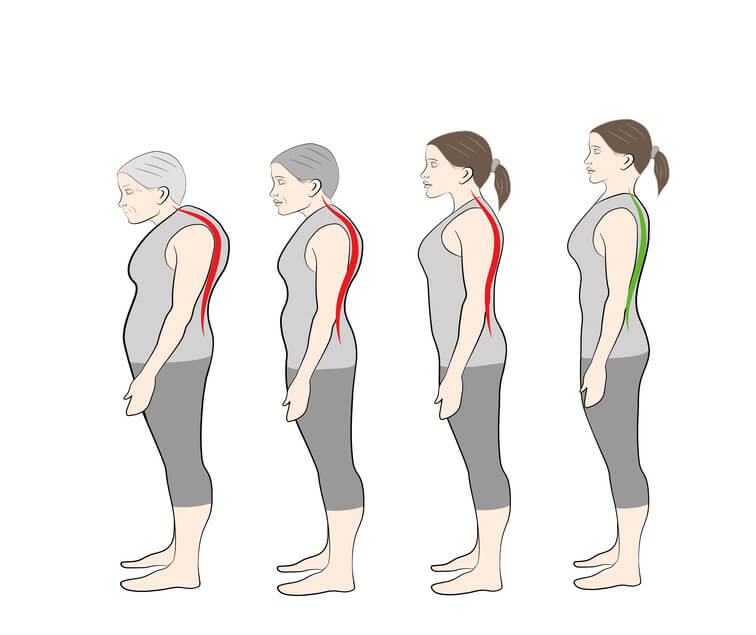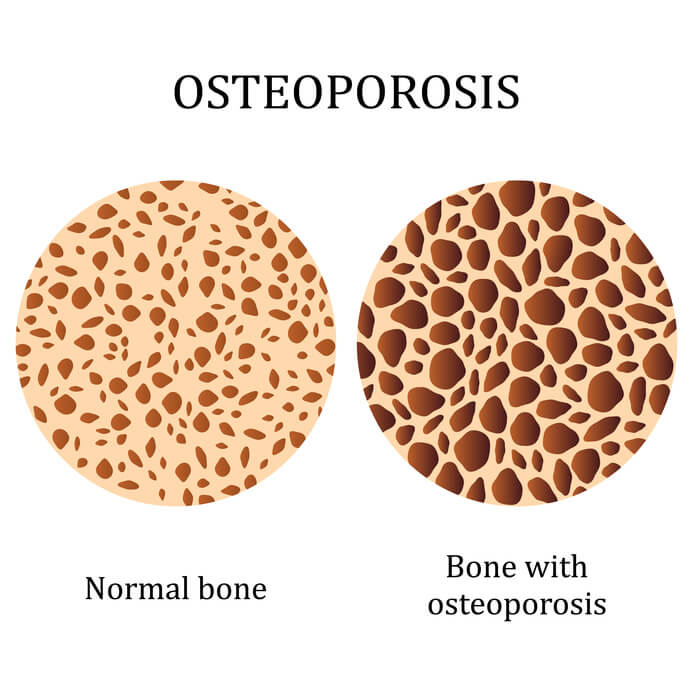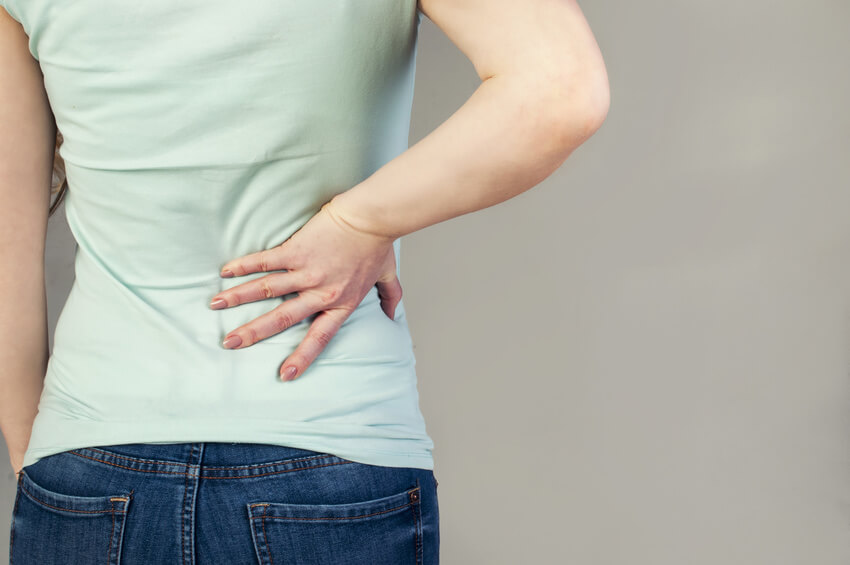….probably not, when you’re young. However, you may be making choices that will weaken your bones and put you at risk for a fracture later in life. Bones are a living and changing organ over the course of a lifetime. During childhood and adolescent years, bone remodeling takes place where bone mass and density continues to increase even after you stop growing taller. Peak bone mass usually occurs by the mid-twenties, where you reach the greatest amount of bone you will ever have. Higher peak bone mass means stronger bones and lessens the change of getting osteoporosis or fracture later in life.
When we are young and starting a family, age 50 seems old and so far off. We think we’ll never be that old….but time passes quickly and our bodies change. As we age, our bones continue to remodel but the balance between bone destruction and new bone formation also changes. Slowly, the bones begin to weaken. This is one of the reasons that people get shorter with age. Less bone mass causes the spine to slowly collapse, making the bones more fragile and susceptible to cracking just from holding up our own body weight or breaking from a simple slip or fall. During midlife, men and women experience more bone loss. This frequently impacts women because women tend to have smaller bone structures and frames compared to men. This means women tend to start with thinner bones and less peak bone mass and bone loss may be compounded when the protective benefit of estrogen is lost as a woman becomes menopausal.


Just like putting money into a retirement account when you first begin working in your twenties produces profound dividends over time, regular deposits of calcium to the bone matrix during childhood up through your twenties can make or break you (literally) in advanced years. In order to create strong bones, the right ingredients are necessary. This includes calcium, vitamin D and regular physical activity. Sound familiar?
We should all eat healthily and exercise regularly, period.
These things are key ingredients during every stage of bone health; during the time of rapid bone formation (in childhood and adolescence), during the maintenance period (from the 30-s to mid-’50s) and with bone loss (with aging).
Here is the Recommended Dietary Allowance (RDA) for calcium:
| Age | Daily RDA (mg) | Practical Application |
| Adolescent girls | 1,300 | This is approximately 4 cups (measuring cup, not glasses of milk)of milk per day, or calcium equivalents. |
| Women 19-50 years | 1,000 | Approximately 3 cups/d |
| Women 51 & older | 1,200 | Approximately 4 cups/d |
| Women with bone loss (osteopenia) | 1,500 | Approximately 5 cups/d |
The body also needs vitamin D in order to absorb calcium. The RDA for vitamin D is 600 IU per day, however, 1000-2000 IU may be recommended for people with certain health conditions.
The best dietary sources of calcium are from dairy products such as milk (including fortified soy and almond milk), yogurt and cheese. Calcium is also found in dark green leafy vegetables, seafood, legumes, and tofu. The chart to the sideshows examples of how much calcium is found in popular foods. The United States Department of Agriculture also has a free Food Composition Database that can give you accurate information about all kinds of foods and nutrients. It can help you search to find which foods contain the most calcium or tell you the calcium content of foods you normally consume. Go to https://ndb.nal.usda.gov/ndb/
NATURAL SOURCES are better absorbed.
dairy products
MILK (1 cup) – 300 mg
fortified ALMOND or SOY MILK, ORANGE JUICE
YOGURT (1 cup) – 350 to 450
CHEESE STICK (1 oz.) – 225 mg
COTTAGE CHEESE (1 cup) – 140 mg
ICE CREAM (1/2 cup) – 110 mg
FROZEN YOGURT (1/2 cup) – 90 mg
others
TOFU (1/2 cup)- 250 mg
CANNED SALMON (3 oz.) – 180 mg
KALE (1 cup, chopped) – 100 mg
BROCCOLI (1 cup) – 180 mg
BREAD (1 slice, fortified) – 70 mg
NOTE: The amounts may vary slightly depending on the brand.
Supplementation may be necessary for people at risk of not getting adequate calcium. This includes:
- Vegans
- Those don’t like milk or have lactose intolerance
- People with digestive conditions causing malabsorption of nutrients (ie: uncontrolled celiac disease or colitis, certain types of bariatric surgery or those who consume large amounts of protein or sodium causing excess secretion of calcium through the urine)
- Smokers
- People who consume large amounts of caffeine or alcohol
- Those requiring long-term use of corticosteroid therapy
Sometimes, we erroneously think that “more” is better. You simply need ADEQUATE calcium consumption. Excess calcium may increase your risk for kidney stones and some studies show that calcium supplements may increase the risk of heart disease or prostate cancer. Research regarding these potential links is necessary and ongoing.
If you have questions about your risk for fracture, now or in the future,
please discuss this with your provider.
For more information, search bone health, osteoporosis or fractures on websites such as the National Osteoporosis Foundation or National Institutes of Health (NIH) or the Office on Women’s Health from the U.S. Department of Health and Human Services at womenshealth.gov



